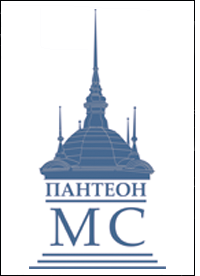            |

PANTHEON OF MATICA SRPSKA
 Influence of ideas of the Enlightenment Influence of ideas of the Enlightenment
At the turn of the 19th century, during the strengthening of national awareness and the movement for the liberation of Serbia from centuries of Ottoman occupation, Serbian intellectuals in the Hapsburg monarchy accepted the values and cultural and organizational patterns which spread across Europe under the influence of the Enlightenment. In 1824, the Chronicle was started and in 1826 Matica Srpska was founded, its members looked after the representation of Serbian culture in the world and, at the same time, strived to enlighten the people. Their aim was to introduce Serbs to modern European currents and to preserve their national identity.
Honorees, benefactors and associates
Like in a beehive, everyone has had a role. The President, Vice-Presidents and the Secretary General of Matica Srpska, who were elected among notable individuals, were given the honor of leading the most significant Serbian institution of the time. Wealthy citizens materially supported Matica's cultural and educational mission, which was realized by its numerous associates.
Vision of Sava Popović Tekelija
A special contribution to the development of Matica Srpska, alongside Jovan Hadžić as one of the founders of Matica Srpska, was given by Sava Popović Tekelija, the first Serbian doctor of legal sciences and one of Matica's greatest benefactors, who was elected as Matica's president in 1838. As a follower of the ideas of the Enlightenment, he proposed that Matica should obtain the attributes of a Serbian academy of sciences. He considered that the social elite gathered around Matica should strive to enlighten the people and that in return the people should preserve the memory of outstanding individuals.
In his will, Tekelija bequeathed that one of the rooms in the Tekelijanum palace, which was under Matica's management, should be turned into a Serbian Pantheon of a kind and be modeled after the Pantheon in Paris.
Pantheon of Matica Srpska
Tekelija's idea of the formation of a pantheon was not officially taken into consideration. However, Matica Srpska has, for decades, gathered manuscripts and portraits of its honorees and benefactors. Thus a collection which represents an authentic testimony to the influence of the intellectual elite and middle class to the development of Serbian society was formed.
In Marija Trandafil's endowment building, which today houses the headquarters of Matica Srpska, there are around a hundred of portraits of honorees, benefactors and associates, and tens of thousands of photographs, letters and other documents. A significant portion of these materials can be found in Matica's electronic data bases.
Matica Srpska as the Serbian Pantheon
Matica Srpska does not preserve memories of only its honorees, benefactors and associates. It has been a guardian of collective memories of other prominent individuals for almost two centuries. In Matica's seven scientific departments work is carried out on several dozens of projects, among which are those of the outmost importance for the writing of the so-called personal history of the Serbian nation: Serbian Biographic Dictionary with 28,000 biographies and the Serbian Encyclopedia, Serbian Biographic Dictionary with 28,000 biographies and the Serbian Encyclopedia, containing data on numerous individuals, institutions, and events. Documents testifying to the life and work of the most distinguished Serbs are kept and processed in the Manuscript Department.
Matica Srpska publishes ten scientific magazines. Among other, one can find in them information on writers, scientists, and other persons who have marked the history of the Serbian nation.
Matica Srpska Library has a fund of 3,500,000 publications, many of which are those with biographic information on distinguished individuals. The Gallery of Matica Srpska exhibits numerous portraits. Its experts also take care of the dozens of others portraits which have remained outside of the permanent exhibition. Thus, Matica Srpska has become the unofficial Serbian Pantheon.
Matica Srpska's open doors
The endowment building of Marija Trandafil, which houses the scientific departments, the Matica Srpska Library and the Pantheon of Matica Srpska, is open for individual and collective visits from employees in scientific and cultural institutions, for foreign diplomatic representatives, students and professors.
The Permanent exhibition of the Pantheon is composed of portraits, a collection of most significant documents and the Secretary's library, with captions in Serbian and English languages. On site computer terminals (touch screens) enable access to data bases containing detailed biographies of honorees and benefactors of Matica Srpska, as well as selected biographies from the Serbian Biographic Dictionary.
Collective visits are organized on previous notification to Matica Srpska's Office for Protocol and Public Relations (Služba za protokol i odnose sa javnošću). Visits to individual scientific departments and the Matica Srpska Library can be organized for all interested parties.Matica Srpska Gallery is open to the public on workdays from 10 to 18.
Realization of Tekelija's vision
The initiative for the formation of the Pantheon was put forward by prof. dr Dušan Nikolić, the Secretary General of Matica Srpska, at the end of 2008, on the 170th anniversary of Sava Tekelija's election for the President of Matica Srpska. The project was realized in 2010, with the financial support from the City of Novi Sad.
The following persons took part in the shaping of the Pantheon of Matica Srpska: MR. Tijana Palkovljević, manager of the Matica Srpska Gallery; Dragana Beleslijin, permanent associate of Matica Srpska; Aleksandra Jovanović, permanent associate of the Manuscript department of Matica Srpska; Vukica Tucakov, technical editor of Matica Srpska’s publications; Andrej Kalmar, translator; Vladimir Šovljanski, lector and corrector; Aleksandra Stefanov, curator of the Matica Srpska Gallery; Vladimir Nikolić, permanent associate of the Manuscript department of Matica Srpska; Mirjana Isakov, designer; Miroslav Zarić, IT; Ljubomir Borđoški, engineer, supervisor for public lighting; Danilo Vuksanović, conservator of the Matica Srpska Gallery and Saša Kulić, Matica Srpska’s economist.
Contact:
Matica Srpska Služba za protokol i odnose sa javnošću Улица Матице српске број 1 21 000 Нови Сад Тел. 021 527 855 Факс: 021 528 901 Е-mail: protokol@maticasrpska.org.rs
Back to top
|
